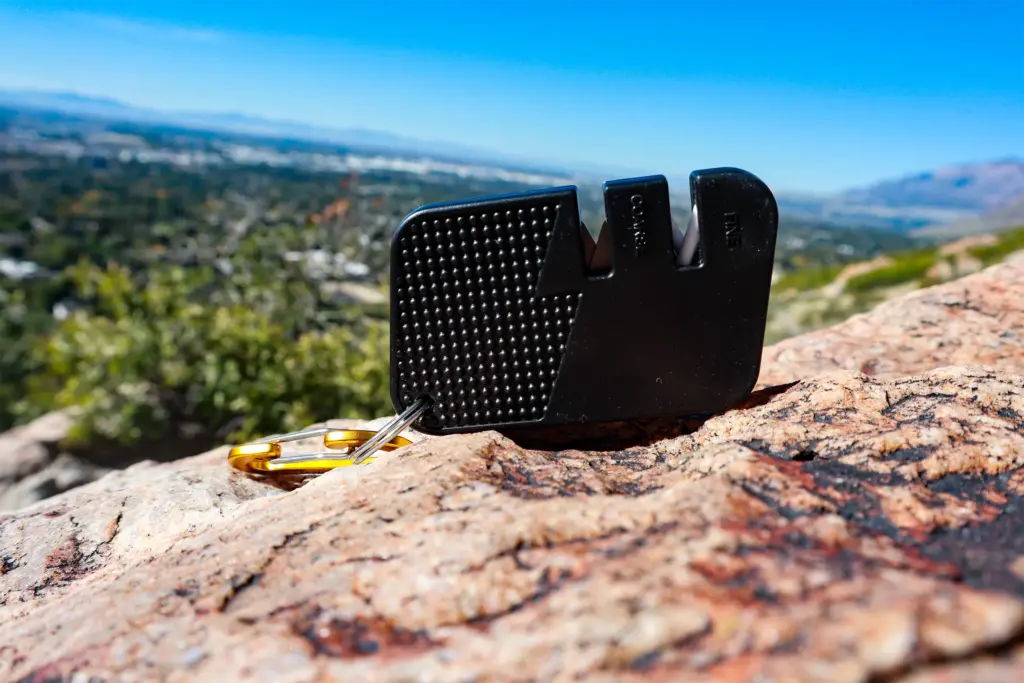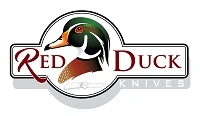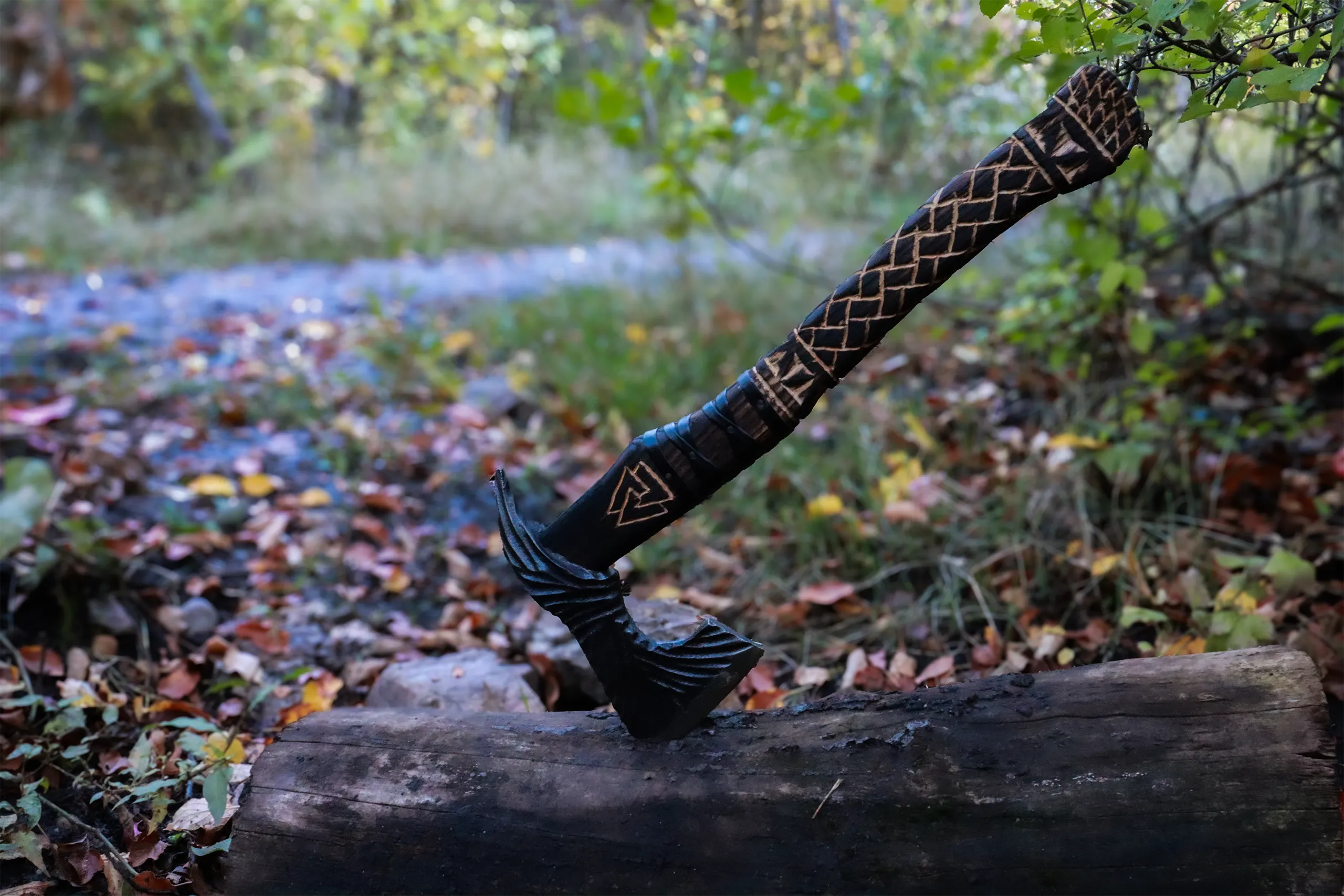Mighty Mite 335 Quick Sharpener
The regular use of a knife puts enormous pressure on its cutting edge. This results in microscopic bends developing on the edge that cause the knife to become dull and unable to cut. At this point, you can use a quick sharpener to restore the edge. However, if left unchecked, the bends will worsen and eventually fold over or even break. Restoring the edge’s sharpness at this point requires removing a significant amount of metal from the edge using more aggressive sharpening processes, such as sharpening stones or a belt sander, to name a few.

If your knife’s blade edge is only slightly dulled, then this is where the Mighty Mite Quick Knife Sharpener comes into play. It’s not a fancy sharpener and won’t produce mirror edges, but its 25-degree carbide sharpening edges will restore a knife’s edge quickly and efficiently. At 3.35” x 2” x ½,” the palm-sized sharpener can easily be stored inside or attached to the outside of your pack or gearbox.
The key to using this quick sharpener is only to use the knife’s weight when pulling the blade across the edges of the tungsten carbide and ceramic rods. This “knife weight only” approach allows you to quickly reshape the blade’s bent edge into a straight sharp edge. Remember, excessive pressure applied during the sharpening process with the Mighty Mite or any other quick sharpener results in excessive metal loss and further flattening and cracking of the edge rather than making the sharpening process go faster or achieving a sharp knife edge. So, remember, MORE PRESSURE IS NOT BETTER!

Mighty Mite 335 Quick Sharpener
How to Use the Mighty Mite Quick Sharpener
- Firmly hold the sharpener upright in one hand. You can also hold the sharpener firmly upright on a flat surface.
- Draw your blade vertically with your other hand across the tungsten carbide, sharpening edges once or twice using only the knife’s weight. (Make sure the entire length of the blade, including the tip, touches the tungsten sharpening edges.)
- Check the edge sharpness with your finger. If not sharp enough, repeat step 2 until satisfied; otherwise, proceed to step 4. If you can, double-check the sharpness by trying to cut a sheet of paper with the blade. If it doesn’t cut, then repeat steps 2 and 3. If the blade cuts the paper (either roughly or smoothly), proceed to step 4.
- Draw the blade across the ceramic rods once or twice to remove the small metal burrs that form during sharpening.
- Check the edge sharpness with your finger. If you still feel burrs, repeat step 4 until you are delighted with the feel of the blade edge. Double-check the sharpness by trying to cut a sheet of paper with the blade. If it doesn’t cut smoothly, then repeat steps 4 and 5. If it cuts the paper smoothly, you have correctly sharpened your knife.
Important Notice: To professionally restore a heavily dulled blade edge will require using our Premium 400/1000 Sharpening Stone Set due to the extra metal that must be removed. Our unique combination of 400 and 1000-grit stones will quickly and easily restore your knife’s severely damaged edge to its former glory. We highly recommend getting both tools to keep your blades Rockin’ and Rolling at home and on the go!


